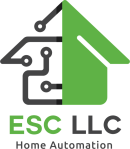Sea Change
Years ago the first Do-It-Yourself smart home products came on the market, led by Ring with video doorbells, Nest with smart thermostats, and Sonos with streaming audio products. Others soon followed and in a short time there was a proliferation of products for those willing to brave the daunting task of reading instructions. They were not appropriate for those who wanted to buy a turn-key system installed by professionals.
These products had one major shortcoming; they didn't work well with products from other companies. You could use a variety of apps on your phone to set your thermostat, see who's at the front door, dim lights, stream music, and arm your security system, but each system required a different app. Functions of one system could not be combined with others for a simple one-button sequence of events. Smart, but not that smart.
These products offered good value and catered to a market niche of people who wanted smart technology, but weren't in a financial position to invest in the type of integrated systems offered by Control4, Crestron, and Savant. Back then, your choice was to buy a fully integrated and expensive system with very high end products, or do it yourself with a limited range of products from the DIY-focused companies. This left a huge gap in the middle of the market. Many people were ready to invest in a fully integrated system, but the choices for cameras, HVAC control, and distributed music were all high end products. These products had better quality, a broader selection, and good integration capabilities with control systems. And they were expensive. This is fine for those with monster budgets. For those in the middle, it was enough to deter them from taking the leap into an integrated home automation system.
Things are different now. There has been a sea change in the smart home market. Ring, Nest, Sonos, and other companies have improved their ability to integrate with others, broadened their selection, and improved their product quality. They are decent, high value products that reap the benefit of high production volume, with economies of scale that allow them to be priced well below the best products in their category. This opens up the possibility of a fully integrated home automation system for a segment of consumers that used to be priced out of the market.
Some systems integrators spurn these mass market products, believing that they are beneath them. In doing so, they are rejecting clients who want home automation but aren't willing to go whole hog for the best products in every category. This approach will work for companies who cater only to the very rich. For those companies willing to adjust to the changing market, it's important to embrace these mid-priced products as useful additions to their toolbox.
At Electronic Services & Concierge, every project begins with an evaluation of the client's needs and budget. We have successfully completed projects from modest price ranges to extremely expensive (and impressive) systems. And everything in between. While the products are different, the goal is the same in all of them; a satisfied customer who feels they received good value for their investment.
We are not done when the project is finished. We have concierge in our name because we are committed to providing great service after the installation is complete. This is why we will only use products that are reliable and easy to use. Many of these mid-priced products now meet that requirement. Consequently, we have an expanded toolbox for providing quality systems at every price level. We will neither oversell or undersell our clients. Each client is unique and we will provide custom solutions to fit their needs and budgets.
When you subscribe to the blog, we will send you an e-mail when there are new updates on the site so you wouldn't miss them.



